Among his extensive repertoire, “Man in the Mirror” stands out as a poignant anthem of personal and social transformation. Released in January 1988 as the fourth single from his seventh solo album, Bad, this song encapsulates a moment of introspection and heartfelt appeal for change, both within oneself and in the wider world. Written by Glen Ballard and Siedah Garrett and produced by Quincy Jones alongside Jackson, “Man in the Mirror” soared to the top of the charts and became a staple of Jackson’s musical legacy. Its stirring lyrics and emotive delivery invite listeners to reflect on their actions and the impact they can have on society.
The song’s resonance was amplified by its chart-topping success, becoming Jackson’s tenth number-one single on the Billboard Hot 100 and achieving a triple Platinum certification by the RIAA. Its powerful message and gospel-infused arrangement helped it transcend the confines of pop music, turning it into a beacon of hope and a call to action during a period marked by rapid social changes. “Man in the Mirror” not only reflects Jackson’s artistic depth but also highlights his ability to address profound issues through the medium of mainstream music, making it one of the most iconic and meaningful songs in his illustrious career.
| Song Title | Man in the Mirror |
|---|---|
| Release Date | January 1988 |
| Album | Bad |
| Writers | Glen Ballard and Siedah Garrett |
| Producer | Quincy Jones, alongside Michael Jackson |
| Chart Success | Tenth number-one single on the Billboard Hot 100 |
| Certifications | Triple Platinum by the RIAA |
| Significance | Iconic anthem of personal and social transformation |
Contents
Background and Release
“Man in the Mirror” was penned by Glen Ballard and Siedah Garrett, two prolific songwriters whose collaboration would result in one of Michael Jackson’s most memorable hits. Ballard, known for his later work with Alanis Morissette among others, and Garrett, a respected singer and songwriter, crafted the song with a depth that resonated with Jackson’s desire for music that had emotional and social relevance. The songwriting duo managed to encapsulate a message of personal reflection and societal change, themes that were close to Jackson’s heart.
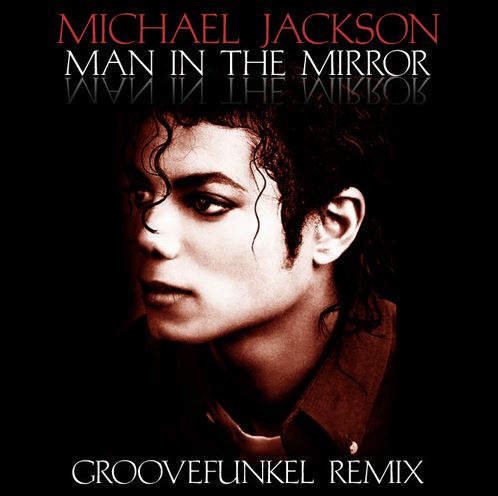
The production of “Man in the Mirror” was helmed by Quincy Jones, a legendary figure in the music industry, with Michael Jackson co-producing. This marked one of many collaborations between Jackson and Jones, who had previously worked together on groundbreaking albums like Thriller and Off the Wall. Their partnership was known for pushing the boundaries of pop music production, blending a variety of genres and pioneering new soundscapes. For “Man in the Mirror,” Jones’s production mastery and Jackson’s meticulous attention to vocal performance and arrangement created a powerful and stirring track.
The song was released in January 1988 as the fourth single from Michael Jackson’s seventh studio album, Bad. This album followed the immense success of Thriller and further cemented Jackson’s reputation as a global superstar. Bad aimed to showcase Jackson’s versatility and innovation as an artist, with “Man in the Mirror” serving as a cornerstone for its themes of introspection and change.
| Songwriters | Glen Ballard and Siedah Garrett |
|---|---|
| Key Themes | Personal reflection and societal change |
| Producers | Quincy Jones and Michael Jackson |
| Significant Collaborations | Part of Jackson and Jones’s continuing partnership following Thriller and Off the Wall |
| Release Date | January 1988 |
| Album | Bad |
| Album’s Significance | Showcases Jackson’s versatility and innovation; follows the success of Thriller |
| Impact | A cornerstone track with themes of introspection and change |
Chart Performance and Achievements
Upon its release, “Man in the Mirror” quickly climbed the charts, reflecting its broad appeal and the strong impact of its message. In the United States, the song achieved significant success, reaching number one on the Billboard Hot 100 where it stayed for two weeks. This accomplishment marked it as Jackson’s tenth number-one single in the U.S., a testament to his ongoing relevance and influence in the music scene.
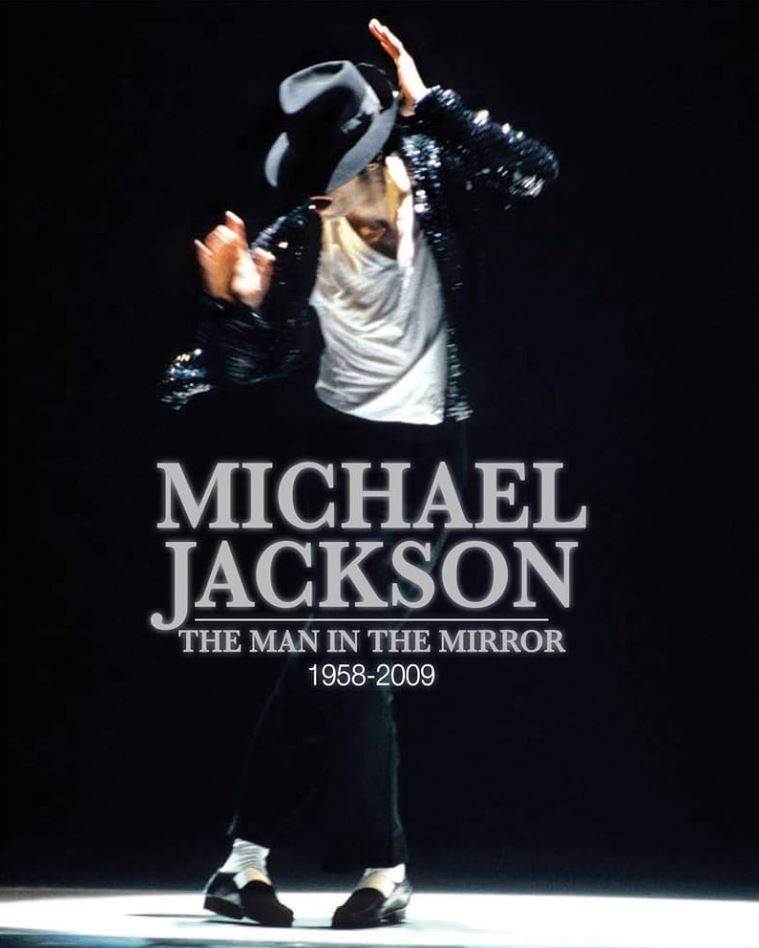
Internationally, the song also performed well initially, especially in the United Kingdom where it peaked at number 21 upon its 1988 release. However, the song’s true global impact would be seen later. Following Michael Jackson’s death in June 2009, “Man in the Mirror” experienced a dramatic resurgence in popularity. It re-entered charts around the world, peaking at number 2 in the UK Singles Chart and reaching the top 10 in multiple other countries. This posthumous re-entry not only underscored the enduring appeal of Jackson’s music but also highlighted how his songs gained additional emotional resonance following his passing.
The song’s achievements extended beyond chart performance. It was certified 3× Platinum by the Recording Industry Association of America (RIAA), signifying over three million copies sold in the U.S. alone. Additionally, “Man in the Mirror” was nominated for Record of the Year at the 31st Grammy Awards, showcasing its recognition within the industry for its artistic merit and profound impact. This track remains a significant part of Jackson’s musical legacy, celebrated for its powerful lyrics and compelling call to action, which continue to inspire listeners around the globe.
| Initial US Chart Performance | Reached number one on the Billboard Hot 100, stayed for two weeks |
|---|---|
| Significance of US Chart Success | Marked as Michael Jackson’s tenth number-one single in the U.S. |
| Initial UK Chart Performance | Peaked at number 21 in 1988 |
| Posthumous Chart Resurgence | Re-entered charts globally in 2009; peaked at number 2 in the UK, top 10 in multiple countries |
| RIAA Certification | Certified 3× Platinum in the U.S. |
| Grammy Recognition | Nominated for Record of the Year at the 31st Grammy Awards |
| Legacy | Remains a significant part of Jackson’s musical legacy, inspiring listeners with its call to action |
Writing and Recording Process
The genesis of “Man in the Mirror” is a testament to the creative synergy between its writers, Glen Ballard and Siedah Garrett. The song was born from a session where Quincy Jones, the producer, called upon his team of writers and challenged them to write a hit that was also meaningful. Garrett, inspired by the opportunity to write for Michael Jackson, teamed up with Ballard, her writing partner. Ballard began crafting the initial chords and melody on a keyboard, while Garrett focused on penning the lyrics that would inspire introspection and change.
Quincy Jones’s role was pivotal not just in initiating the creation of “Man in the Mirror,” but also in shaping its final form. Known for his exacting standards and clear vision, Jones provided critical feedback throughout the songwriting process, pushing for a song that could resonate deeply with listeners and meet the high expectations set for Jackson’s Bad album. Once the demo was presented to Jones, he approved it but requested further refinements, including a more extended middle eight and some lyric adjustments to maximize its emotional impact.
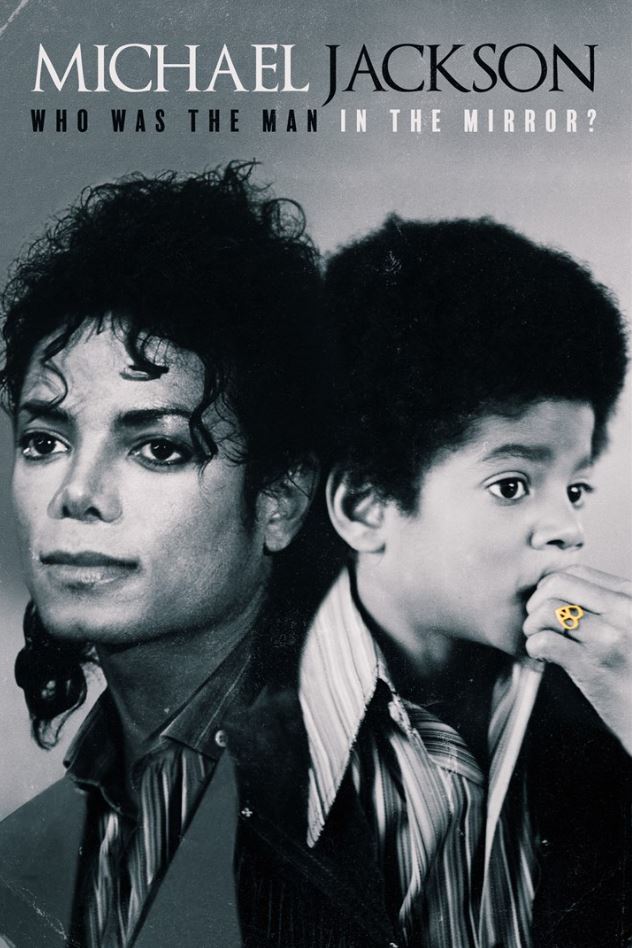
The recording sessions were characterized by a collaborative atmosphere, with Jackson himself deeply involved in the production. One of the most significant contributions to the song was the inclusion of the Andraé Crouch Choir, which added a profound gospel element to the track. The choir’s involvement was orchestrated by Jones, who sought to infuse the song with a spiritual uplift that could enhance its message of personal commitment and social change. This choice proved essential in defining the song’s soul-stirring and anthemic quality.
| Initial Concept and Challenge | Quincy Jones challenged his team to write a meaningful hit for Michael Jackson. |
|---|---|
| Songwriting Duo | Glen Ballard and Siedah Garrett collaborated, with Ballard on melody and Garrett on lyrics. |
| Quincy Jones’s Role | Pivotal in shaping the song, provided feedback, and demanded refinements for emotional impact. |
| Recording Sessions | Characterized by collaboration, with Michael Jackson heavily involved in production. |
| Gospel Element | Inclusion of the Andraé Crouch Choir, orchestrated by Jones to enhance the song’s spiritual uplift. |
| Overall Impact | The song became an anthemic call for personal commitment and social change. |
Song Structure and Style
“Man in the Mirror” is structured to build gradually, leading to a powerful climax that features the gospel choir. The song starts in the key of G major, which sets a reflective and somewhat solemn tone. Approximately halfway through the track, there is a key change to A-flat major, a musical shift that mirrors the lyrical plea for personal transformation and underscores the song’s uplifting message.
The arrangement of “Man in the Mirror” is a masterclass in dynamic contrast and musical storytelling. The song begins with a soft, introspective verse delivered by Jackson’s emotive vocals, gradually layering instruments and backing vocals to increase intensity. The use of synthesizers, keyboards, and percussion complements the vocal lines, creating a rich tapestry that supports the song’s themes.
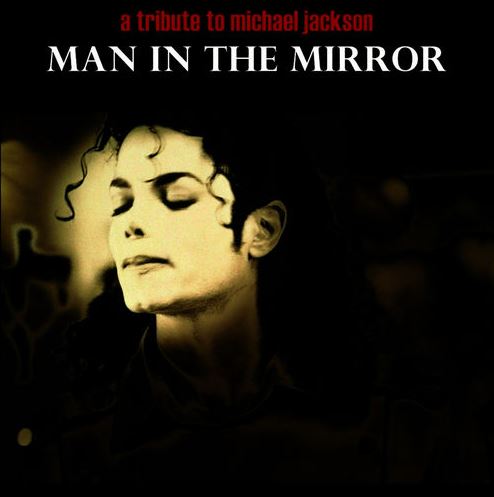
The lyrical content of “Man in the Mirror” addresses themes of self-reflection and social responsibility. Garrett’s lyrics encourage the listener to look inward and acknowledge their own role in creating a better world. The refrain, “If you wanna make the world a better place, take a look at yourself, and then make a change,” resonates as a powerful call to action, inviting not just contemplation but active participation in societal improvement.
The gospel choir’s contribution to “Man in the Mirror” is perhaps one of the most iconic uses of a choir in pop music. Their entry in the latter part of the song brings a significant shift in its dynamic, elevating the track from a personal reflection to a communal declaration. The choir’s robust and resonant vocals enhance the song’s emotional impact, making the final plea for change not only a personal commitment but a collective endeavor.
This blend of thoughtful lyrics, innovative structure, and compelling musical elements makes “Man in the Mirror” not only a highlight of Michael Jackson’s career but also a lasting example of how music can inspire and influence social consciousness.
| Initial Key | G major, setting a reflective and somewhat solemn tone |
|---|---|
| Key Change | To A-flat major halfway through, enhancing the message of transformation |
| Arrangement | Begins soft with gradual layering of instruments and backing vocals, using synthesizers, keyboards, and percussion |
| Lyrical Content | Focuses on self-reflection and social responsibility, with a refrain encouraging personal change |
| Gospel Choir Contribution | The choir elevates the song to a communal declaration, enhancing emotional impact |
| Overall Impact | A masterclass in dynamic contrast and musical storytelling that inspires social consciousness |
Critical Reception
“Man in the Mirror” received widespread acclaim from critics and the public alike, securing its place as one of Michael Jackson’s most impactful songs. Ed Hogan from AllMusic described the song as “gentle,” focusing on its reflective nature and its call for personal change. Jon Pareles of The New York Times highlighted the song’s “gospelly lift,” underscoring how the spiritual elements contributed to its emotional weight. Davitt Sigerson from Rolling Stone praised it as one of the “half dozen best things Jackson has done,” noting its straightforward homily of personal commitment.
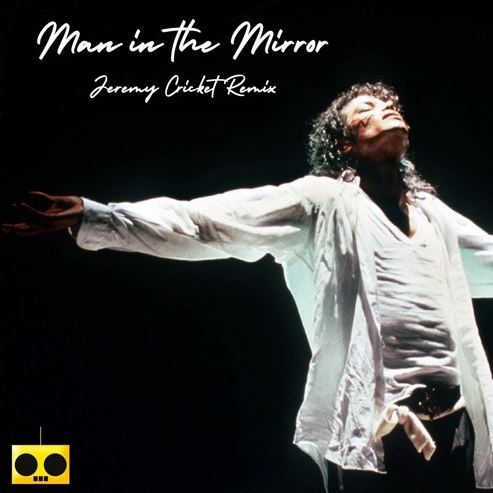
The song’s broad appeal was reflected in its numerous nominations and accolades. Notably, it was nominated for Record of the Year at the 31st Grammy Awards, a significant endorsement of its quality and impact on the music industry. Musicians and critics alike have often cited “Man in the Mirror” as a pivotal piece in Jackson’s career, exemplifying his ability to blend profound lyrical themes with compelling musical dynamics.
Josh Tyrangiel from Time magazine named it among Jackson’s ten best songs, calling it “one of Jackson’s most powerful vocals and accessible social statements, not to mention the best-ever use of a gospel choir in a pop song.” In 2017, Dave Fawbert from ShortList remarked that the song contained “one of the greatest key changes in music history,” a moment in the track that amplifies its message of transformation and renewal.
| Critic | Publication | Comment |
|---|---|---|
| Ed Hogan | AllMusic | Described the song as “gentle,” highlighting its reflective nature and call for personal change. |
| Jon Pareles | The New York Times | Emphasized the song’s “gospelly lift” and its emotional weight. |
| Davitt Sigerson | Rolling Stone | Praised it as one of the “half dozen best things Jackson has done,” noting its straightforward homily of personal commitment. |
| Josh Tyrangiel | Time | Named it among Jackson’s ten best songs, highlighting its powerful vocals and effective use of a gospel choir. |
| Dave Fawbert | ShortList | Commented on the “greatest key changes in music history,” amplifying the message of transformation. |
| Grammy Nomination | Nominated for Record of the Year at the 31st Grammy Awards. | |
Music Video
The music video for “Man in the Mirror” is unique within Michael Jackson’s body of work primarily because Jackson himself is mostly absent from the visuals, aside from a brief clip at the end. Directed, produced, and edited by Don Wilson, the video is a powerful montage of historical and contemporary footage that emphasizes the song’s themes of social change and global consciousness.
Instead of featuring performance footage of Jackson, the video presents a series of compelling images and scenes from around the world, including clips of famine, the civil rights movement, and other significant political and social moments. These include poignant images of figures like Martin Luther King Jr., Mother Teresa, and Nelson Mandela, juxtaposed with scenes of conflict and suffering to emphasize the need for empathy and action.
The video also contains controversial and thought-provoking content such as footage of Adolf Hitler, Ku Klux Klan rallies, and scenes from the Kent State shootings, which serve to reinforce the stark realities that necessitate a call to action as articulated in the song’s lyrics. This bold approach in the video’s content was aimed at triggering reflection and motivating viewers to consider their role in fostering a better world.
Larry Stessel, the video commissioner at Epic Records at the time, served as the executive producer, playing a crucial role in overseeing the production and ensuring that the video’s message was effectively communicated. The choice to use such a strong visual narrative instead of a traditional performance video was a significant artistic decision, underscoring Jackson’s intent to make a profound social statement rather than just perform another hit song.
The “Man in the Mirror” video was instrumental in amplifying the song’s message, making it not just a musical track but a social commentary, and it has been lauded for its creative vision and its ability to convey powerful themes through visual media. This approach not only expanded the song’s reach but also deepened its impact, cementing its status as a cultural and artistic touchstone in Michael Jackson’s illustrious career.
| Director, Producer, and Editor | Don Wilson |
|---|---|
| Video Content | Montage of historical and contemporary footage highlighting social change and global consciousness |
| Notable Figures Featured | Martin Luther King Jr., Mother Teresa, Nelson Mandela |
| Controversial Content | Footage of Adolf Hitler, Ku Klux Klan rallies, and the Kent State shootings |
| Executive Producer | Larry Stessel |
| Artistic Decision | Use of a strong visual narrative instead of a traditional performance video to make a social statement |
| Impact | Amplified the song’s message, making it a social commentary and a cultural and artistic touchstone in Jackson’s career |
Live Performances and Cultural Impact
“Man in the Mirror” was not only a commercial success but also a highlight in Michael Jackson’s live performances, showcasing his ability to connect with audiences on a deeply emotional level. Jackson first performed the song live at the Grammy Awards in 1988, delivering a powerful rendition that featured gospel singers including the Winans and the Andraé Crouch Choir. This performance is remembered for its emotional depth and its vivid illustration of the song’s themes.
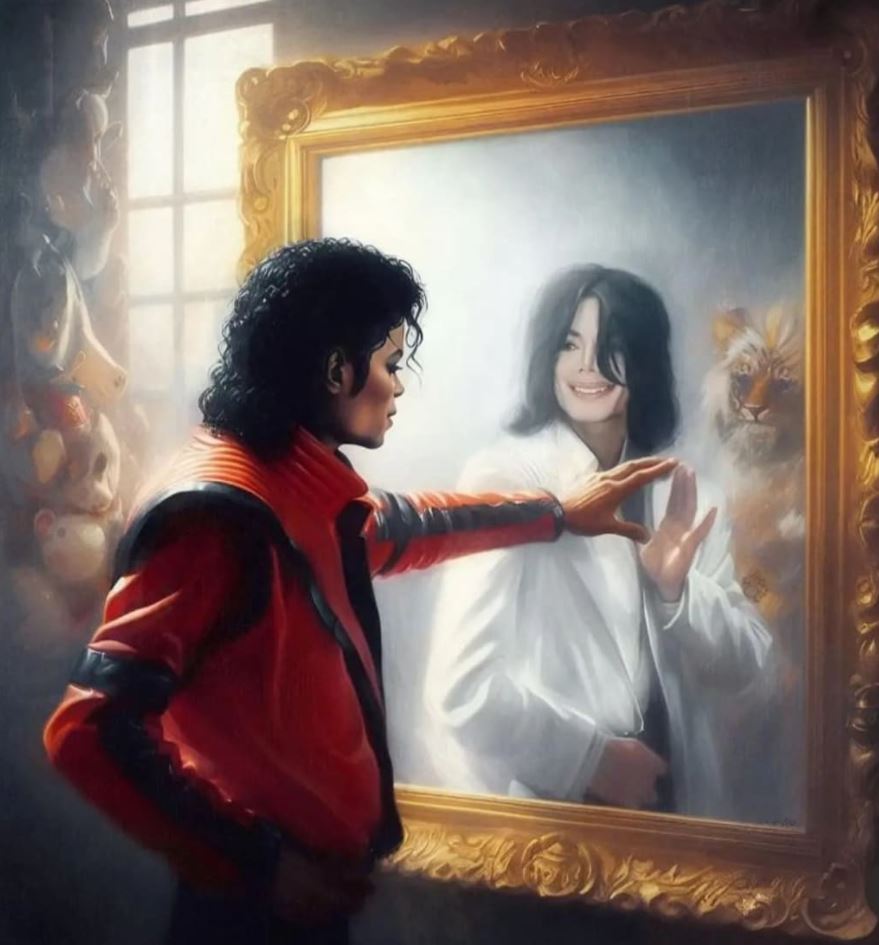
Throughout his career, “Man in the Mirror” was a staple in Jackson’s concert setlists, particularly during the Bad, Dangerous, and HIStory tours. It often served as the closing number, leaving audiences with a message of hope and self-reflection. The song’s role in these concerts was not just as a musical performance but as a call to action, urging listeners to consider their impact on the world. The live renditions of this song were characterized by Jackson’s passionate vocal delivery and the use of dynamic staging, which included choir accompaniments that amplified the song’s message.
The cultural impact of “Man in the Mirror” was further solidified when it was poignantly used during Michael Jackson’s memorial service in July 2009. An instrumental version of the song played as his casket was carried out of the Staples Center, symbolizing his final message to the world. A spotlight shone on a lone microphone on an empty stage, a powerful reminder of his absence and the enduring resonance of his music.
| First Live Performance | Grammy Awards in 1988, featuring gospel singers including the Winans and the Andraé Crouch Choir |
|---|---|
| Concert Tours | Staple in Jackson’s setlists during the Bad, Dangerous, and HIStory tours |
| Role in Concerts | Often served as the closing number, emphasizing a message of hope and self-reflection |
| Live Performance Characteristics | Characterized by Jackson’s passionate vocal delivery and dynamic staging, often with choir accompaniments |
| Memorial Service | Instrumental version played during Michael Jackson’s memorial service in July 2009 as his casket was carried out |
| Symbolism at Memorial | Spotlight on a lone microphone on an empty stage, symbolizing Jackson’s absence and the enduring resonance of his music |
Legacy and Continued Influence
“Man in the Mirror” holds a significant place in Michael Jackson’s legacy, encapsulating his depth as an artist who was not afraid to address personal and societal issues. The song continues to be relevant in discussions about art that challenges societal norms and inspires change. Its message of self-improvement and responsibility resonates with new generations, maintaining its status as a timeless piece in the canon of pop music.
The song’s influence extends beyond its original release, continuing to impact pop culture and the music industry. It has been covered and reinterpreted by numerous artists across various genres, demonstrating its universal appeal and adaptability. Notable covers include renditions by James Morrison, Kris Allen, and a powerful performance by the cast of “Glee,” which introduced the song to a younger audience. Each cover brings a new dimension to the song, while retaining the core message that made it iconic.
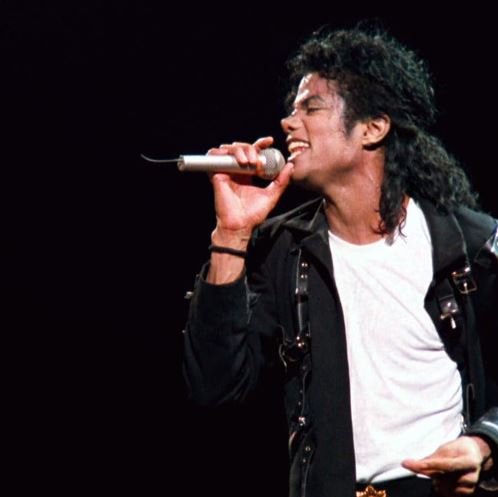
Beyond covers, “Man in the Mirror” has been used in films, television shows, and commercials, often as a backdrop to powerful storytelling moments that require a song with profound emotional impact. Its lyrics are frequently cited in books and essays that discuss themes of personal change and societal impact.
The song’s continued cultural relevance is a testament to its universal themes and Michael Jackson’s genius in expressing complex emotions and ideas through music. It remains a tool for education and inspiration, used by teachers and speakers worldwide to evoke consideration of one’s role in making a positive change in the world.
“Man in the Mirror” is not just a song but a cultural touchstone that continues to inspire and provoke thought about personal accountability and the collective human experience. As new artists bring their interpretations to this classic, and as audiences continue to respond to its powerful message, the song’s legacy is likely to endure, reminding us all of the impact one person can have in shaping a better world.
| Significance in Jackson’s Legacy | Encapsulates his depth as an artist addressing personal and societal issues |
|---|---|
| Relevance to Modern Audiences | Continues to resonate with new generations, maintaining its status as a timeless piece |
| Covers and Renditions | Notable covers by James Morrison, Kris Allen, and the cast of “Glee,” each adding new dimensions to the song |
| Use in Media | Frequently used in films, TV shows, and commercials for its profound emotional impact |
| Academic and Inspirational Use | Used in education and speeches, evoking discussions on personal change and societal impact |
| Legacy and Cultural Touchstone | Continues to inspire and provoke thought about personal accountability and collective human experience |
“Man in the Mirror” stands as a monumental work within Michael Jackson’s illustrious career, encapsulating his unique ability to blend musical innovation with profound social commentary. The song not only marked a high point in Jackson’s artistic output but also became a defining moment in popular music, influencing both the industry and its global audience. Its success across various music charts and its enduring presence in the cultural zeitgeist underscore its significant impact.
Throughout his career, Michael Jackson was known for his dedication to breaking musical boundaries, and “Man in the Mirror” is a testament to his artistic vision. The song combines pop sensibilities with deep, introspective lyrics and gospel influences, creating a powerful call to action that resonated with listeners worldwide. Its message of self-reflection and the importance of personal change for societal betterment is both timeless and universal, appealing to a broad audience and inspiring multiple generations.
The cultural impact of “Man in the Mirror” extends far beyond its initial release. It has been embraced by various artists who have covered or sampled the song, each bringing their interpretation and keeping the message relevant for new audiences. The song’s use in film, television, and other media has further cemented its status as a cultural artifact, often used to underscore moments of transformation and revelation.
Michael Jackson’s ability to convey complex messages through his music was not just a skill but a mission. “Man in the Mirror” serves as a clear reflection of his intent to influence the world positively. This track, more than just a song, is a movement in itself, advocating for introspection and change at both personal and collective levels. Jackson’s commitment to this theme is evident not only in the song’s lyrics but also in its emotional delivery and the subsequent visual representations in its music video and live performances.
The song’s message is particularly resonant in today’s world, where issues of social justice and personal responsibility continue to dominate public discourse. Its call to action remains relevant, urging current and future generations to look inward and contribute to making the world a better place. The simple yet profound chorus, “If you wanna make the world a better place, take a look at yourself and then make a change,” echoes as a motivational mantra for personal and social transformation.
In conclusion, “Man in the Mirror” is more than a musical achievement; it is a legacy of Michael Jackson’s profound impact on music and culture. Its continued relevance is a tribute to his vision of using music as a vehicle for change, proving that art can indeed influence reality. As we reflect on Jackson’s contributions to music and society, “Man in the Mirror” remains a powerful reminder of the role each individual plays in shaping our collective future. It stands not only as a pinnacle of Jackson’s career but as an enduring symbol of the potential for music to inspire and mobilize action.
